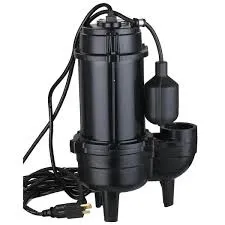Armenian
- Afrikaans
- Albanian
- Amharic
- Arabic
- Armenian
- Azerbaijani
- Basque
- Belarusian
- Bengali
- Bosnian
- Bulgarian
- Catalan
- Cebuano
- Corsican
- Croatian
- Czech
- Danish
- Dutch
- English
- Esperanto
- Estonian
- Finnish
- French
- Frisian
- Galician
- Georgian
- German
- Greek
- Gujarati
- Haitian Creole
- hausa
- hawaiian
- Hebrew
- Hindi
- Miao
- Hungarian
- Icelandic
- igbo
- Indonesian
- irish
- Italian
- Japanese
- Javanese
- Kannada
- kazakh
- Khmer
- Rwandese
- Korean
- Kurdish
- Kyrgyz
- Lao
- Latin
- Latvian
- Lithuanian
- Luxembourgish
- Macedonian
- Malgashi
- Malay
- Malayalam
- Maltese
- Maori
- Marathi
- Mongolian
- Myanmar
- Nepali
- Norwegian
- Norwegian
- Occitan
- Pashto
- Persian
- Polish
- Portuguese
- Punjabi
- Romanian
- Russian
- Samoan
- Scottish Gaelic
- Serbian
- Sesotho
- Shona
- Sindhi
- Sinhala
- Slovak
- Slovenian
- Somali
- Spanish
- Sundanese
- Swahili
- Swedish
- Tagalog
- Tajik
- Tamil
- Tatar
- Telugu
- Thai
- Turkish
- Turkmen
- Ukrainian
- Urdu
- Uighur
- Uzbek
- Vietnamese
- Welsh
- Bantu
- Yiddish
- Yoruba
- Zulu
Telephone: +86 13120555503
Email: frank@cypump.com
Նյմ . 20, 2024 15:31 Back to list
sump pump and ejector pump
Understanding Sump Pumps and Ejector Pumps
Pumping systems are vital components in various residential and commercial applications, particularly when it comes to managing water levels and preventing flooding. Two important types of pumps used for these purposes are sump pumps and ejector pumps. While they serve distinct functions, understanding their roles, differences, and optimal uses is essential for effective water management.
Sump Pumps
Sump pumps are primarily used to remove water that accumulates in a sump basin, typically found in basements or crawl spaces. Their main function is to prevent flooding by pumping out excess water that might infiltrate these areas during heavy rainfall or snowmelt. Sump pumps are often activated by a float switch, which senses the water level in the sump pit. Once the water reaches a predetermined height, the pump turns on, expelling water away from the foundation of the home.
There are two main types of sump pumps submersible and pedestal. Submersible sump pumps are designed to be installed underwater in the sump pit and are typically more efficient and quieter than pedestal pumps. Pedestal pumps, on the other hand, have their motor mounted above the sump pit, making them easier to access for maintenance but also louder during operation.
When selecting a sump pump, it’s crucial to consider the sump pit size, water table levels, and the pump's capacity to ensure it can handle the required volume of water efficiently. Regular maintenance, such as cleaning the sump pit and testing the pump’s operation, is essential to ensure reliability, especially during heavy rain seasons.
Ejector Pumps
sump pump and ejector pump

Ejector pumps serve a different purpose compared to sump pumps. They are primarily used to pump wastewater or effluent from lower-level areas, such as basements, up to the main sewer line, especially when gravity flow is not sufficient. Ejector pumps are often employed in homes that have lower bathrooms or laundry rooms that sit below the level of the sewer line.
The operation of an ejector pump involves a motorized pump and a sealed tank. Similar to sump pumps, ejector pumps are activated by floats that detect the fluid level in the tank. When the waste level rises, the pump activates and forces the wastewater out through piping into the sewer system. This system often also includes a check valve that prevents backflow.
Ejector pumps can handle solid waste and require a design that accommodates a certain level of solids without clogging. It is essential to choose an ejector pump that can manage the expected volume and type of waste effectively. Regular maintenance, including checking for clogs and ensuring the floats work correctly, is equally important to avoid malfunctions.
Key Differences
While sump pumps and ejector pumps may seem similar in their pumping action, their purposes distinguish them considerably. Sump pumps primarily manage groundwater and prevent flooding, while ejector pumps handle wastewater and elevate it to sewer systems. Understanding the specific needs of your home or business is fundamental when deciding which pump to install.
In conclusion, both sump pumps and ejector pumps play crucial roles in reducing water-related issues in homes and businesses. Sump pumps are essential for protecting basements from flooding, whereas ejector pumps ensure proper sanitation by moving wastewater from lower levels. By recognizing their specific functions and maintaining them properly, property owners can effectively safeguard their spaces from water damage and associated complications.
-
China Small Slurry Pump Manufacturer - High Efficiency Small Centrifugal Slurry Pumps for Mining & Industry
NewsJun.24,2025
-
Custom Drilling Mud and Slurry Pump Supplier - High Efficiency, Tailored Solutions
NewsJun.10,2025
-
Supply Vertical Submersible Sewage Pump High-Efficiency WQ/QW Pumps Supplier
NewsJun.10,2025
-
Premium Sewage Ejection System & Pumps Efficient Waste Removal
NewsJun.09,2025
-
Premium Wholesale Slurry Pump Impellers Durable & Efficient Slurry Handling
NewsJun.09,2025
-
Top Sewage Pump Companies Durable Industrial Solutions for Efficiency
NewsJun.09,2025










